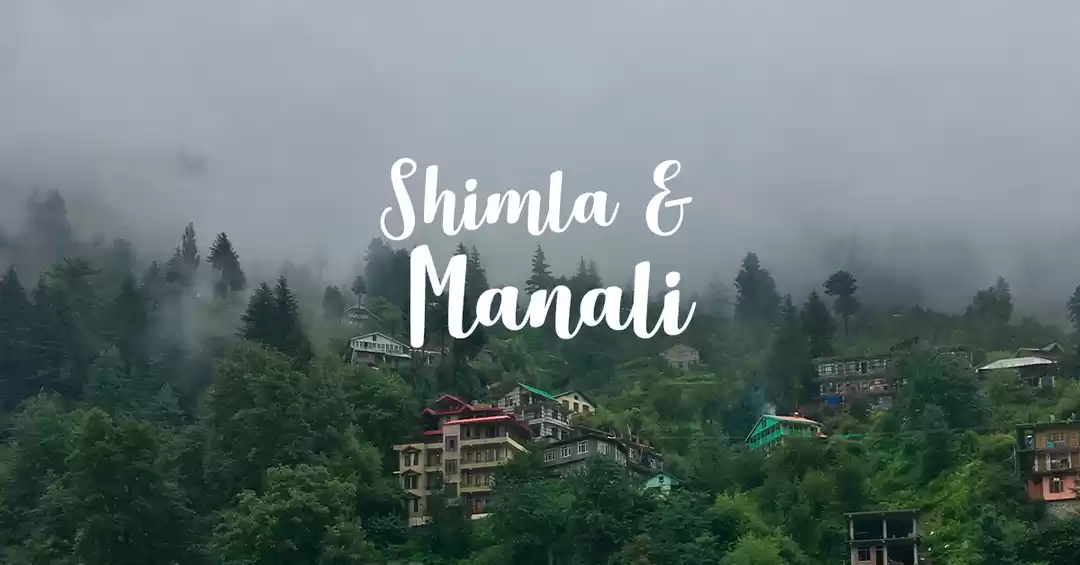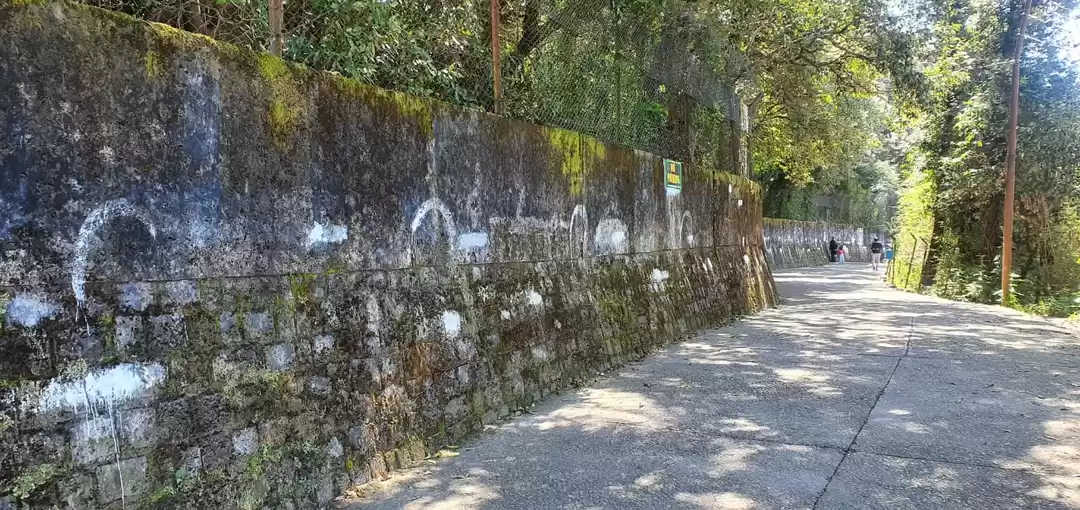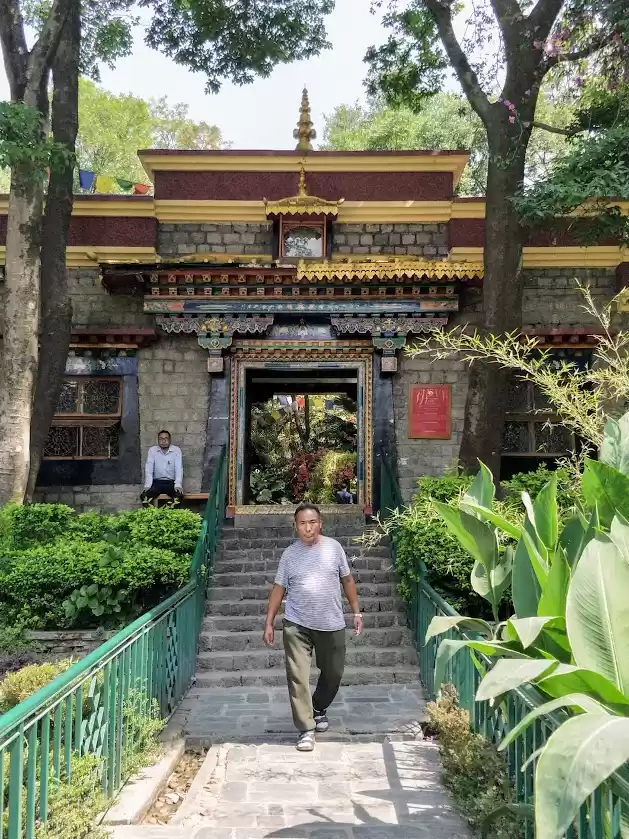

Mcleodganj, this name immediately conjures up a visual image of a hilly locale, set during the time of the Raj, with the bungalows of the Sahibs dotting the hillscapes. Partially true, but this quaint (well, not so quaint actually) little hamlet at the foothills of the Dhauladhars is one of the principal seats for Buddhism today.
Dharamsala, more famous among cricket aficionados, has one of the highest and most scenic cricket pitches that hosts International tournaments. It is a municipality in the Kangra district of Himachal Pradesh, and the district headquarters as well. The little town of Mcleodganj is nestled in the upper reaches of Dharamsala.

The first thing that one notices on the approach from Dharamsala is the Church of St. John In The Wilderness. Quite literally so, the old British era church built in 1852 by the Britishers who had colonized Dharamsala after the Anglo Sikh War. This old church, though still functional, immediately transports one to the 19 th century, with its old brick walls, ornate stained glass windows, old teak wood pews and the altar. The second Viceroy, Lord Elgin was buried here. We (Boishali & I) reached there when the Sunday morning service was in progress. Indeed, a super experience to kick start the little hill trip.
Mcleodganj / Dharamsala is where the Dalai Lama settled in India, after fleeing the Chinese oppression on Tibet in 1959. It is here that the Tibetan government-in-exile was established and the Namgyal monastery and the Tsuglagkhang Buddhist temple complex was built. The Dalai Lama temple complex as it is more popularly called, houses the temple itself with huge statues of Shakyamuni Buddha and Avalokiteshvara.
Alongside the complex is a Tibetan museum that offers the visitors a detailed insight into the occupation of Tibet, the martyrdom of the Tibetan heros, their fleeing from persecution and taking sanctuary in India.
As we entered the temple complex after the mandatory security screening, the black Tibetan martyr pillar comes to view. A short walk further, you enter the temple precincts - the sprawling temple courtyard. In the courtyard, we could see monks of all ages - the elders engrossed in their discussions, the youngsters playing around. As you ascend the top level of the temple, the mood turns more sombre, with monks and devotees engrossed in their prayers and tourists also sitting in quiet contemplation. A stupa in the middle of the Dalai Lama temple complex.

One thing that strikes the visitors as they climb the stairs is the wall housing the several bronze Buddhist prayer wheels. Turning these wheels, each filled with several hundred Avalokiteshvara mantras, is destined to fill you with a feeling of being blessed.

The chamber opposite the main sanctum housing the several hundred butter lamps is another surreal sight.

Walking inside the main sanctum of the temple, the benevolent Buddha looks up the worshippers with such gentle compassion, that you'd just want to sit there are look upon him. Most of the times, the main hall is filled with monks and other worshippers, deeply engrossed in their chanting. All of this creates an overwhelming experience of prayer and piety.


The outside view from the temple terrace is also breath-taking, surrounding lush green valleys, houses perched on the hill surfaces, and view of Dharamsala in the little distance.

After spending some time at the Dalai Lama temple, we walked back to the main square of Mcleodganj.

Enroute there are several small eateries offering authentic Tibetan food and drink, that can be savoured - Try the thukpa at the Namgyal café on Temple road. You could also try Tibet Kitchen for an authentic Tibetan lunch. All along the temple road you'll find street side vendors and shops selling Thangka paintings, Tibetan masks and statues and curios from Nepal and Tibet. The secret is to bargain hard like any Indian would do. Some street views of Mcleodganj:
From the main square, another road goes towards the Bhagsu Nag temple and waterfall. Situated at about 2 km from the main square, the best option is to walk upto the Bhagsu Nag temple. Taking a vehicle upto the parking may mean being stranded in the traffic (single lane) for a long time. To refresh and take a break after the walk from Mcleodganj, you could head to the German Bakery.
After having filled your hungry stomachs and rested your feet at this little café, head to the Bhagsu Naag temple and waterfalls. The small temple dedicated to Lord Shiva, has a mythological story associated with it (Most temples in Himachal Pradesh do, after all it is also called Dev Bhoomi). The story is about a Daitya King Bhagsu, who stealthily stole the water of a lake ruled by a Naag to quench the thirst of his subjects. When the Naag discovered this, a fight ensued between the two, and the water that Bhagsu had trickily collected in a kamandalu spilt out and this is where the Bhagsu falls are today. In his dying moments Bhagsu was blessed by the Naag that this place would be known as Bhagsu Naag hence forth. The temple was built much later. Today there is a swimming pool in the front of the temple where the water from the falls are collected via a piped system. At all times, several tourists can be seen frolicking in the pool. A short trek through a stepped route brought us to the waterfalls. Cool water flows down from the Dhauladhars into the valley below. This is another place that draws tourists who are visiting Mcleodganj.
All this walking and trekking worked up a good appetite, and the Shiva Café is a good place to stopover for some piping hot chai and a quick bite. On our walk, back from Bhagsu, we stopped over at a kiosk of a Tibetan woman selling Mandalas and Thangkas. Her cute little kid readily posed for a few clicks with Boishali.

Our digs for those days was at Udechee Huts in Naddi, Upper Mcleodganj. As we reached Naddi, a beautiful rainbow welcomed us, giving an omen that the trip was bound to be lovely.

Located 4 km uphill from Mcleo, this resort comprising 14 hut style rooms is nestled on a hillock offering uninterrupted views of the Dhauladhar mountains. The view of the rising sun turning the mountain tip golden, was the best sight to wake up to in the mornings, and the sound of the flowing waterfalls was a lullaby that put us to sleep in the nights. Having visited in August, we had the occasional shower that would wash the entire hillside to further accentuate the already lush green of the shrubs and vegetation. The resort has such a location that the visitors can just sit down with a book, on the balcony overlooking the hills with the chirping of the birds offering the perfect background score - the whole experience is magical.
One of the must dos in Mcleodganj, if your feet allow you, is the Triund trek. We didn't have the time to do this, but from what I've heard it is one magical experience. Triund is located at an elevation of about 3000m surrounded by the Dhauladhar ranges on one side and the Kangra valley on the other. The trek can be done from Mcleodganj or Bhagsu. For more details pls visit http://www.triund.in/
Another must visit when in the Dharamshala / Mcleodganj area is the Norbulingka Tibetan Institute. Located in Sidhpur village, a little off the Dharamshala - Palampur road, this place is a wonderful peek into the arts, craft and culture of Tibet. Norbulingka was also featured in a song from the movie Rockstar.

From the moment you step inside the gates of Norbulingka, it is as if you are transported to a different world. Gurgling streams run through immaculately maintained Japanese styled gardens, while birds of all different species can be seen flittering among the treetops. The architecture, built in traditional Tibetan style gives a feeling of returning to old Tibet. Since we were visiting in August, the rains washed greenery accentuated the feel even more.
The first thing to see is the Deden Tsuklagkhang temple housing a 14ft statue of Shakyamuni Buddha, and beautiful thangka frescos adorning the walls and pillars. The peace of the place is so overwhelming that you can be lost in this space for hours.

The Losel Doll museum, houses 150 odd dolls dressed in regional costumes from different parts and tribes of Tibet. The elaborate costumes give a view of the richness and diversity of Tibetan culture.

A small stone shrine in the centre of the garden is dedicated to all the Bodhisattvas, with beautiful paintings of Shakyamuni Buddha, Avalokiteshwara, Manjushri, White Tara etc, along with brightly painted stones carrying the Om Mani Padme Hum mantra that is ubiquitous across the Buddhist world.
Norbulingka's quaint little café is a great place to sit down after the tour for some traditional butter tea and Tibetan snacks.

The shop offers thangkas, statues, home furnishings, shawls - all created by the artistans at the institute. Detailed information on Norbulingka can be got at http://www.norbulingka.org

After leaving Norbulingka, we had a quick brush with Tantric Buddhist traditions at the Gyuto Tantra Monastery located in Sidhbari, which though was not on the itinerary, was nevertheless and amazing visit. Originally founded in Tibet in 1474, this is a school of Tantric Buddhism under the Mahayana lineage. This monastery is the abode of Karmapa, the Head of the Kagyu Tibetan Buddhism. The main chamber houses a majestic image of the Buddha, and the view of the entire monastery with the mighty Dhauladhars in the backdrop, is truly a sight!! This being a place when tantra is practiced, the inside of the main temple is out of bounds for cameras.
Dharamshala is quite accessible from Chandigarh and Delhi alike. By road, Himachal Tourism Volvo buses ply daily from Kashmiri Gate ISBT via a 10 hour journey to Dharamshala. Chandigarh is about 5 - 6 hours away by road from Dharamshala. Flights from New Delhi are also operated by Air India and Spicejet daily to Gaggal, which is ~15 kms from Dharamshala and ~10 kms from Kangra. By train, Pathankot is the closest railhead 90 kms (~2.15 hours) away. There are no dearth of staying options in Dharamshala or Mcleodganj. An interesting tour circuit around Dharamshala can be clubbing it with Dalhousie (117 kms) on one end and Palampur (40kms) on the other. For history enthusiasts visiting Kangra is also a good option.
























